Helen Hunt, 60, Stuns During Her Latest Appearance, and Her Lips Become the Center of Attention

You’ve spent your entire life researching microorganisms. The last few years, you have been creating a device that can shrink you in size. And finally, it’s ready.
At first, you want to shrink yourself to the size of a thumb, so you can probably see some microbes with the unaided eye. And then, after more experimenting, you hope to shrink to the size of a bacterium yourself. To make the journey safe, you put on a special suit, similar to a space suit. It’s equipped with a life support system.
You direct a beam from the device at yourself. The beam must change your mass and volume. To return to the previous state, you must stand on a round platform the size of a hockey puck. You put it near your feet, so you can easily climb on it when you get smaller, press the button, and activate the machine.
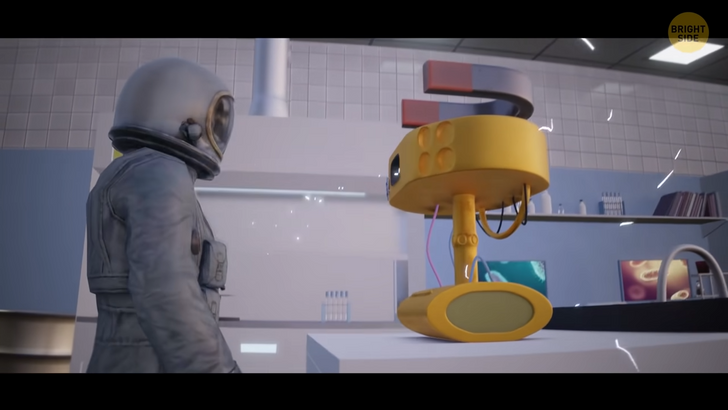
Uh oh. Something’s wrong. The device gives an error, and you shrink not to the size of a thumb, but a thousand times smaller. To the size of a bacterium. Ooops. You realize this when a fly as big as an airplane zooms past you during the shrinking. You become so small that the fleece of the carpet on which you were standing seems to be the size of huge trees.
Don’t panic. You need to find the puck, stand on it, and you’ll return to your normal size. It was right next to your feet, just an inch away. Wait, but what’s one inch now, when 1,000 people your size can fit on the tip of a human hair...?
You decide to climb the fleece to see where the puck is. You can’t see the lab ceiling. The room is out of focus because of its huge size. You’re surrounded by thousands of bacteria. They’re so different in sizes and colors. But you can identify three main forms.
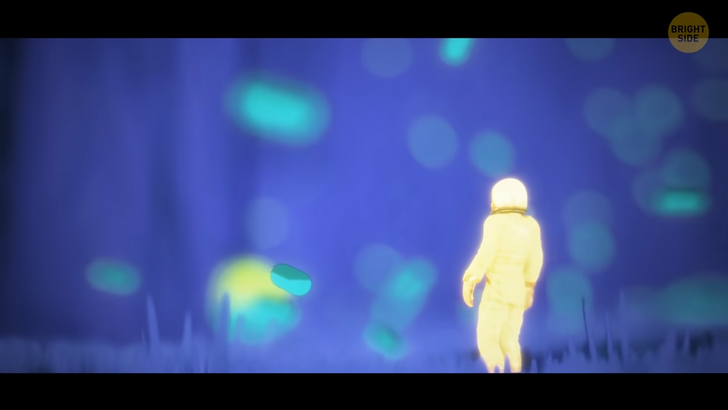
Round bacteria that look like spheres are cocci. They can merge with each other and increase in size.
Cylindrical, capsule-shaped bacteria, looking like sausages or bananas. These are bacilli. And spiral bacteria are called spirilla. At the end of their body, they have a hair-like cilium.
Bacteria are essential for our planet. They help to produce oxygen and absorb carbon dioxide. They purify the water and air, digest the food inside our stomachs, and improve our immune system. They’re crawling on the ground all over the carpet. You start climbing the fleece. On your way, you meet cocci that look like huge potatoes, spirilla similar to spaghetti.
After a few hours, you’ve finally reached the top of the carpet. For you, it was a long time, but in reality, just a couple of minutes have passed. The smaller you are, the slower the time’s going. Do you remember how difficult it is to swat a fly? That’s because it sees your movements in slow motion. So, looking around you see an endless forest of fleece.
In the distance, you can see the silhouette of a big mountain with a flat top. It seems bigger than Everest to you. Great, now you need to get there alive. Suddenly, a huge bacterium attacks you from below. It’s several bacilli joined together. They look like a bunch of sausages. To escape, you jump down. You weigh so little that falling from any height is safe.
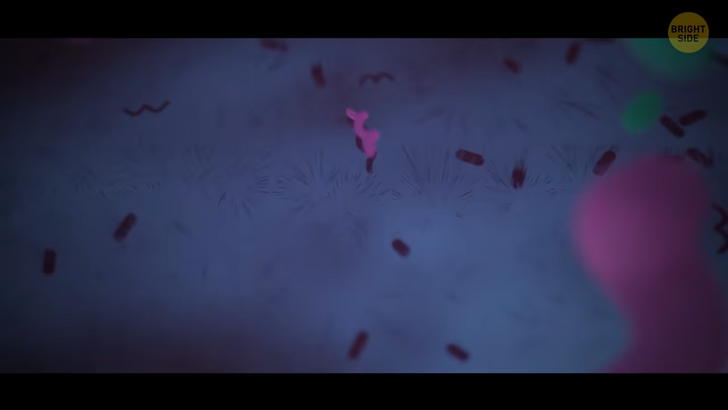
You run through the dense forest. You notice that almost all the bacteria are going at you. Most of them eat organic material, such as glucose or carbohydrates. And right now, lucky you — you’re the biggest source of carbs. Smaller microbes stick to your legs, arms, and face. You shake them off and fall.
Several bacilli joined together are approaching, but then, a round object with spikes, the size of a football, crashes into them. You see a lot of these balls and realize they’re viruses. Microorganisms that can’t live apart from bacteria. To reproduce, they must infect a living being. The viruses have entered the bacterium. Other bacteria that chased you are attacked too.
You see a gigantic bacterium that looks like a passenger Boeing without wings. It’s a type of cocci — several big balls attached to each other and about to eat you. You see a small, prickly football getting inside its body. The bacterium shivers and freezes. After a moment, a hole appears in it, and hundreds of thousands of viruses fly out. They’re everywhere and looking for a new host.
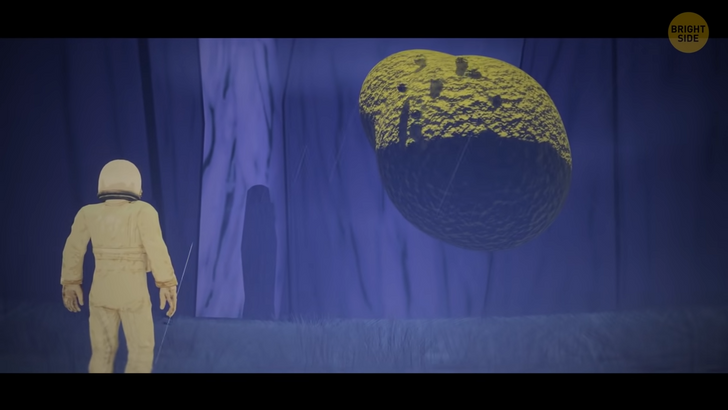
Prickly balls fly towards you at high speed. You grab a piece of lint and swing it like a baseball bat. You fight off the viruses one by one. Your bat breaks and you run away. It seems you’re safe now. You’re entering a huge field. There’s nothing here but bacteria.
You realize this is a small spot on the carpet that you accidentally burned a few months ago. There’s a billion microbes here, and they’re multiplying at a tremendous rate. One bacterium increases in size and splits into two. After a few minutes, these two bacteria also grow and divide. Now there are four of them. The colony of bacteria grows exponentially.
With such rapid reproduction, a single bacterium can create offspring weighing about a ton in 24 hours. After 5 days, the bacteria will be able to fill all the seas and oceans. Fortunately, the speed with which they divide is equal to the speed of their destruction. Dryness, a ray of light, high temperature, humidity — all these phenomena control the population of microbes. Under ideal conditions, the bacteria could take over the whole world.
You make your way through a field of microorganisms. Large bacteria consume small ones. They multiply and are being destroyed. It’s a boiling sea of life. You feel your foot is stuck. You stepped on something sticky. Right underneath, a large spherical bacterium crawls out of the ground. It’s connected with other bacteria and hasn’t got a certain form. It looks like formless pulsing biomass. The thing is clinging to your body, wrapping you.
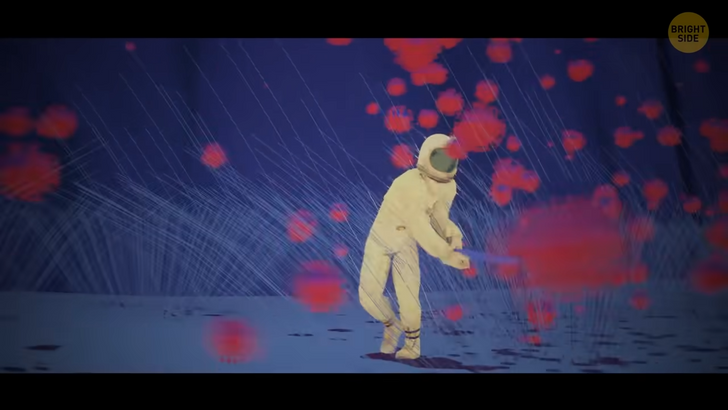
It feels like you’re being absorbed by warm jelly. The bacterium compresses your chest. It’s hard to breathe and move. At this moment, something that looks like a metal screw smashes into the bacterium. A large diamond bursts in next. After that, several thin smooth legs looking like curved needles get inside too.
All these details unite and transform into a strange creature inside the microbe. A diamond is attached to one end of the screw, and the needle legs cling down. Several dozen of these break into the jelly’s body. They connect together and form an army of robots. All these creatures break out from a small hole in the bacterium and tear the microbe to pieces. You escape and find yourself in chaos.
The little robot with a diamond for a head is called a bacteriophage. Despite their appearance, they’re created by nature, not artificially. The goal of bacteriophages is to attack and destroy bacteria from within. That’s how they reproduce. These creatures are all around us everywhere and control the population of microorganisms.
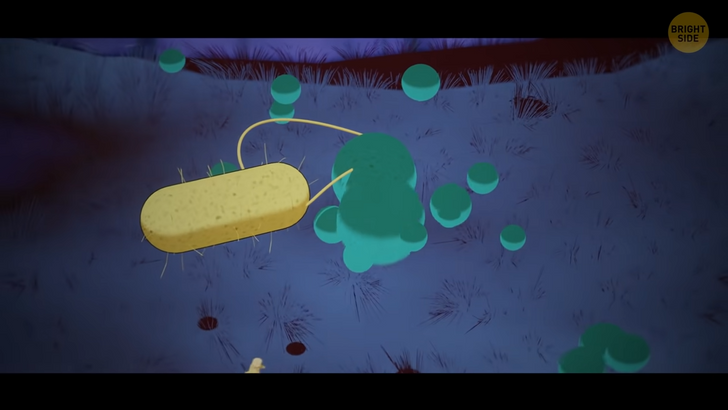
When bacteria multiply inside the human body, they leave waste products of decay. This waste is harmful to the body, so it has to fight. Sometimes, doctors use bacteriophages, so they help to get rid of bad microbes. They don’t attack anything but bacteria.
And now you see hundreds of billions of bacteriophages destroying billions of bacteria. The walking diamonds jump on the bacterium, plunging their heads into it, and release the genetic code — separate parts that assemble in new bacteriophages. You continue on your way and take a few diamonds with you just in case.
The road is long, but after a few weeks, you finally manage to reach the puck. In the normal flow of time, it’s been an hour. You’re exhausted, and there’s still a whipping to the top. The puck is so high that you can’t see the top of it. You can’t sleep, because you might wake up inside some microbe. There are still a lot of bacteriophages around, but you don’t want to take any chances.
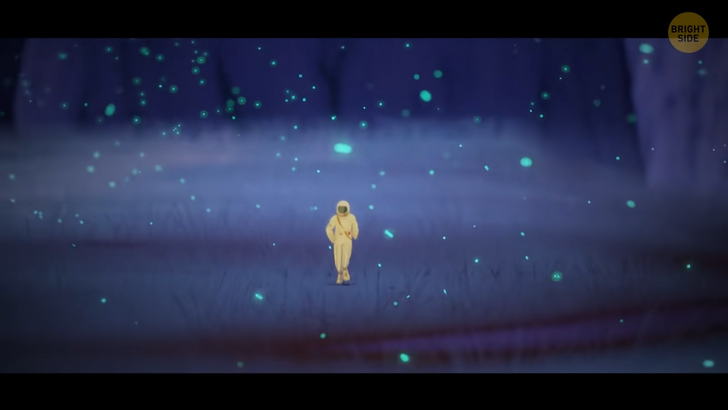
A deafening crash shakes the air. It’s like an airplane turbine is running right next to your ear. You’re looking up. A creature the size of a city lands on the carpet from the sky. It flaps its wings and makes this noise. The wings create a hurricane.
You grab the fleece to keep yourself from being blown away. The creature smells bad. One of its legs resembles a large skyscraper. You realize it’s a fly. Here’s your chance to get to the puck. Big orange eyes, divided into thousands of segments, look like two planets. You climb on the tip of the fly’s leg.
The insect takes off, and you hold on tight. The carpet is moving further and further away. From up here, you see the top of the puck. It’s so wide that you can’t see the round edge. You let go of the fly and fall. In the air, you run into millions of bacteria.
Finally, you land on the solid puck surface. The device activates, and you return to your normal size. You are indeed, one lucky bug.











